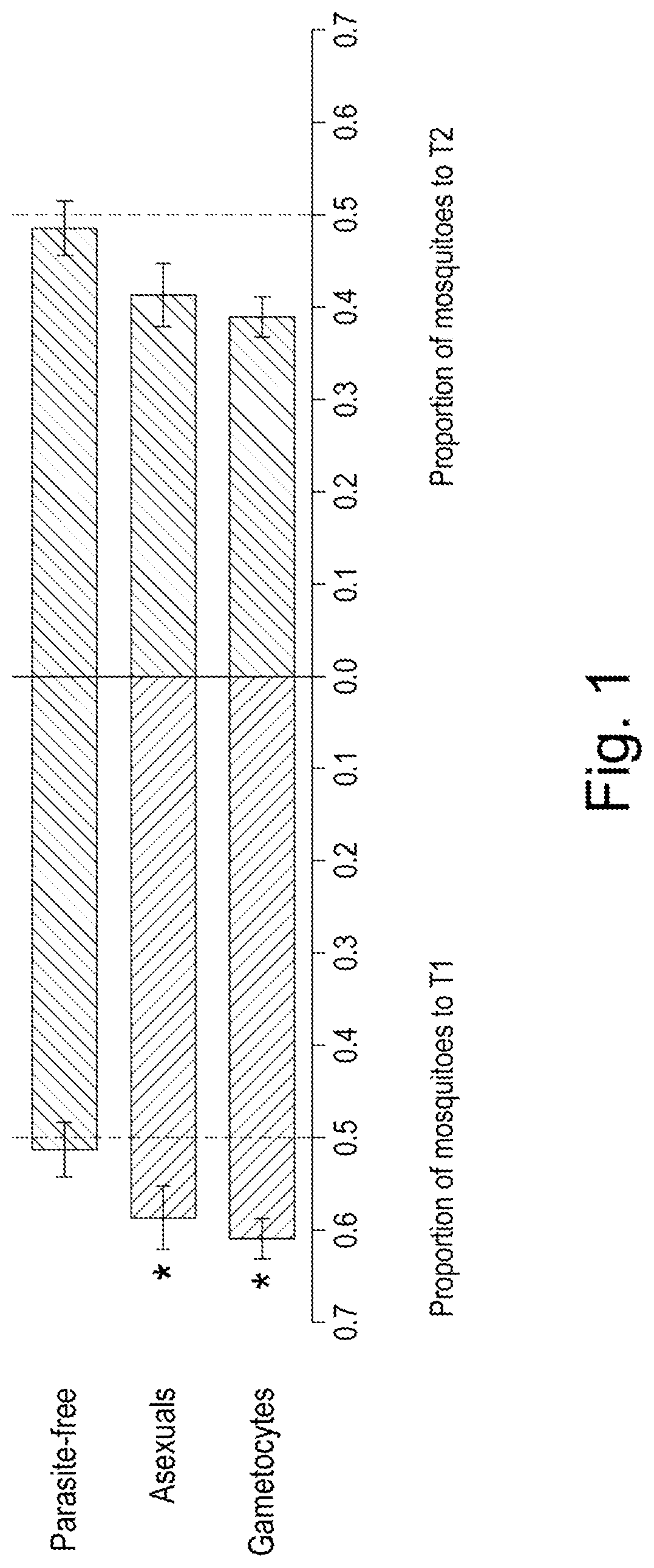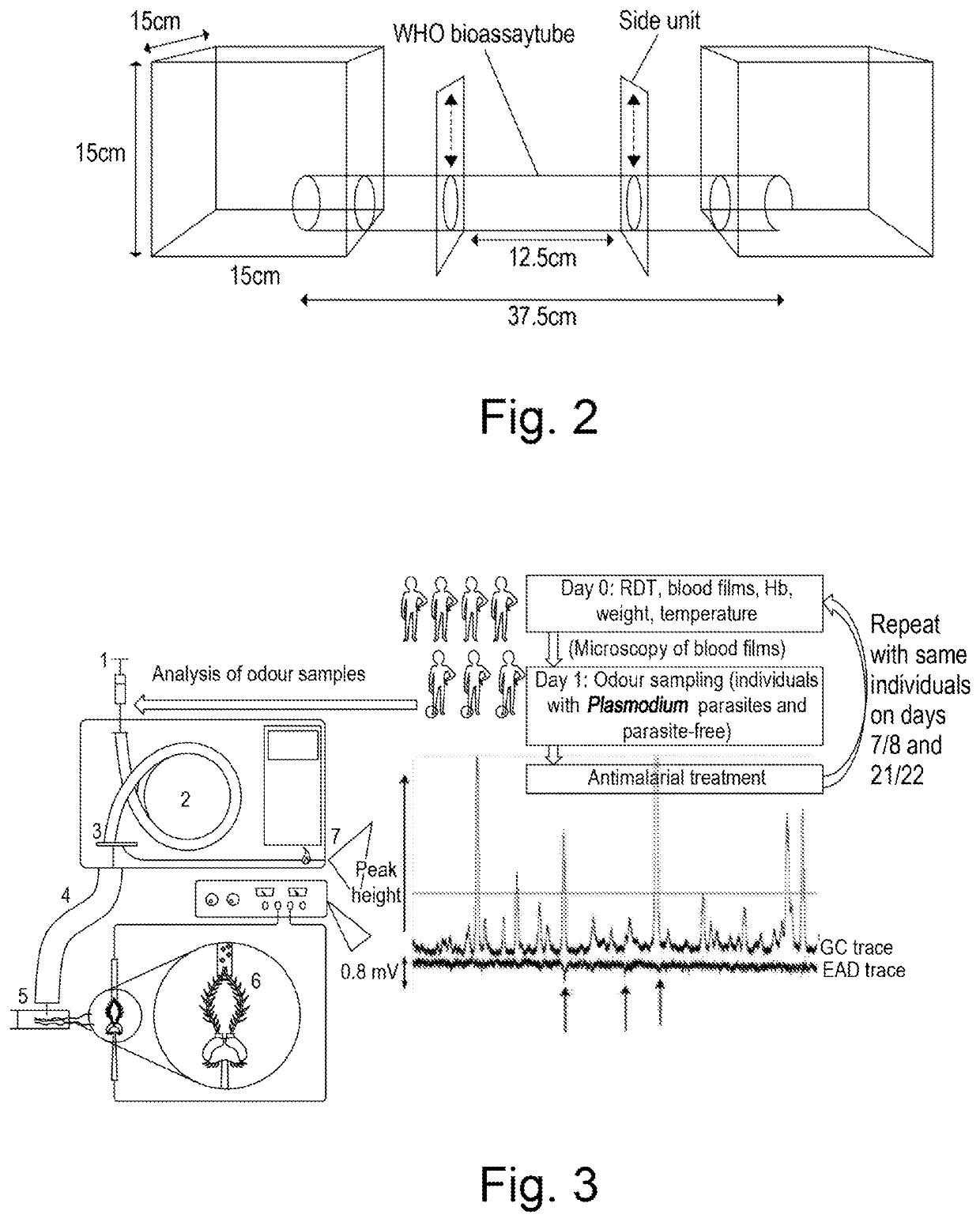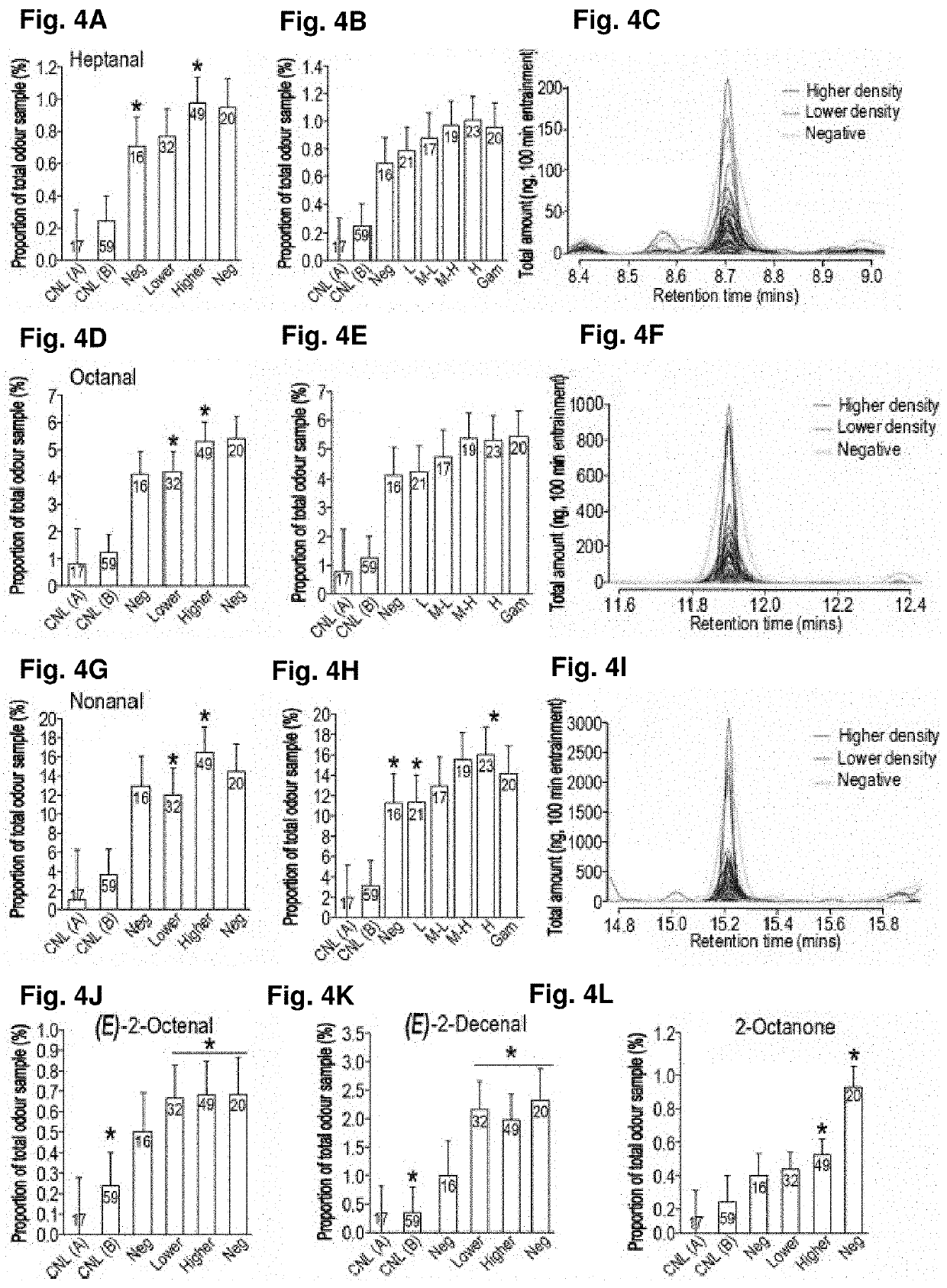Mosquito attractants
a technology of attractants and mosquitoes, applied in the field of mosquito attractants, can solve the problem of not fully capturing the complex biological and biochemical host-parasite interaction
- Summary
- Abstract
- Description
- Claims
- Application Information
AI Technical Summary
Benefits of technology
Problems solved by technology
Method used
Image
Examples
example 1
[0082]Materials and Methods
[0083]Ethics
[0084]Study participants were five- to twelve-year-old children local to the Thomas Odhiambo Campus of icipe in Western Kenya (000251S, 34° 131E), including Rusinga Island, in Suba District, Homabay County. Participants were recruited after obtaining signed consent. The study protocol (NON SSC 389) was approved by the Scientific and Ethical Review Committee of the Kenya Medical Research Institute (KEMRI / RES / 7 / 3 / 1). Subsequent analyses were conducted at the London School of Hygiene & Tropical Medicine (LSHTM) (ethics reference 8510).
[0085]Attractiveness of ‘Infected Odour’ (Socks) by Cage Assays
[0086]A cohort of Plasmodium-infected, asymptomatic (tympanic temperature 7 was studied for the attractiveness of their skin odour to Anopheles gambiae s.s. Forty-five children were included, of which there were: 23 with microscopic gametocytes or an estimated gametocyte density above 50 gametocytes / μL blood by QT-NASBA, 10 positive for asexual parasites ...
example 2
[0142]Table 3 below shows the results of analysis of sampled foot odour from Plasmodium-infected and non-infected individuals. The percentage composition of foot odours for the various volatile compounds are shown, as well as the mean amounts, in ng, relative to nonanal. The amounts of compounds were collected in 100 minutes sampling from the foot only.
Percentage ofMean amount found odour sample relative to nonanal, ng*Individual:NegativeInfectedNegativeInfectedHexanal1.6992.78664.23470.326Heptanal0.6101.07723.05029.7501-Octen-3-one0.4020.75315.21619.0142-Octanone0.0320.0511.2291.410Octanal3.1575.224119.392144.275(E )-2-Octenal0.4550.80517.20820.348Nonanal9.83717.237371.977476.035(E )-2-Decenal1.1762.27544.48457.509
[0143]Discussion
[0144]We demonstrated that elevated production of specific aldehydes in skin odour is associated with increased attractiveness to mosquitoes in Plasmodium-infected people. We found that odour from all P. falciparum-infected individuals was more attractive ...
example 3
[0148]A synthetic lure composed of the Mbita blend (MB5) and the Plas 5 blend has been found to attract Anopheles mosquitoes in a field trial undertaken in Bubaque, Bijagos archipelago. The synthetic lure was used to bait Centre of Disease Control (CDC) Light traps at three concentrations (0.1% (v / v), 1% (v / v) and 10% (v / v) Plas 5 with MB5. As well as successfully attracting Anopheles mosquitoes, mosquitoes of the genera Aedes and Culex were also attracted to the lures. A total of 2134 mosquitoes were caught over 25 nights across the five treatments. Of this, 206 (9.7%) consisted of female anophelines. Traps baited with MB5+1% Plas 5 had the highest Anopheles females capture rate (n=13.4) and this treatment caught the most substantial number consistently. The combination of MB5+10% Plas 5 had the highest absolute mosquito capture rate (n=106). FIGS. 9 and 10 visualise the mosquito abundances with treatment. Using a 5×5 Latin Square design, the control system demonstrated the ability...
PUM
| Property | Measurement | Unit |
|---|---|---|
| v/v | aaaaa | aaaaa |
| v/v | aaaaa | aaaaa |
| v/v | aaaaa | aaaaa |
Abstract
Description
Claims
Application Information
 Login to View More
Login to View More - R&D
- Intellectual Property
- Life Sciences
- Materials
- Tech Scout
- Unparalleled Data Quality
- Higher Quality Content
- 60% Fewer Hallucinations
Browse by: Latest US Patents, China's latest patents, Technical Efficacy Thesaurus, Application Domain, Technology Topic, Popular Technical Reports.
© 2025 PatSnap. All rights reserved.Legal|Privacy policy|Modern Slavery Act Transparency Statement|Sitemap|About US| Contact US: help@patsnap.com



